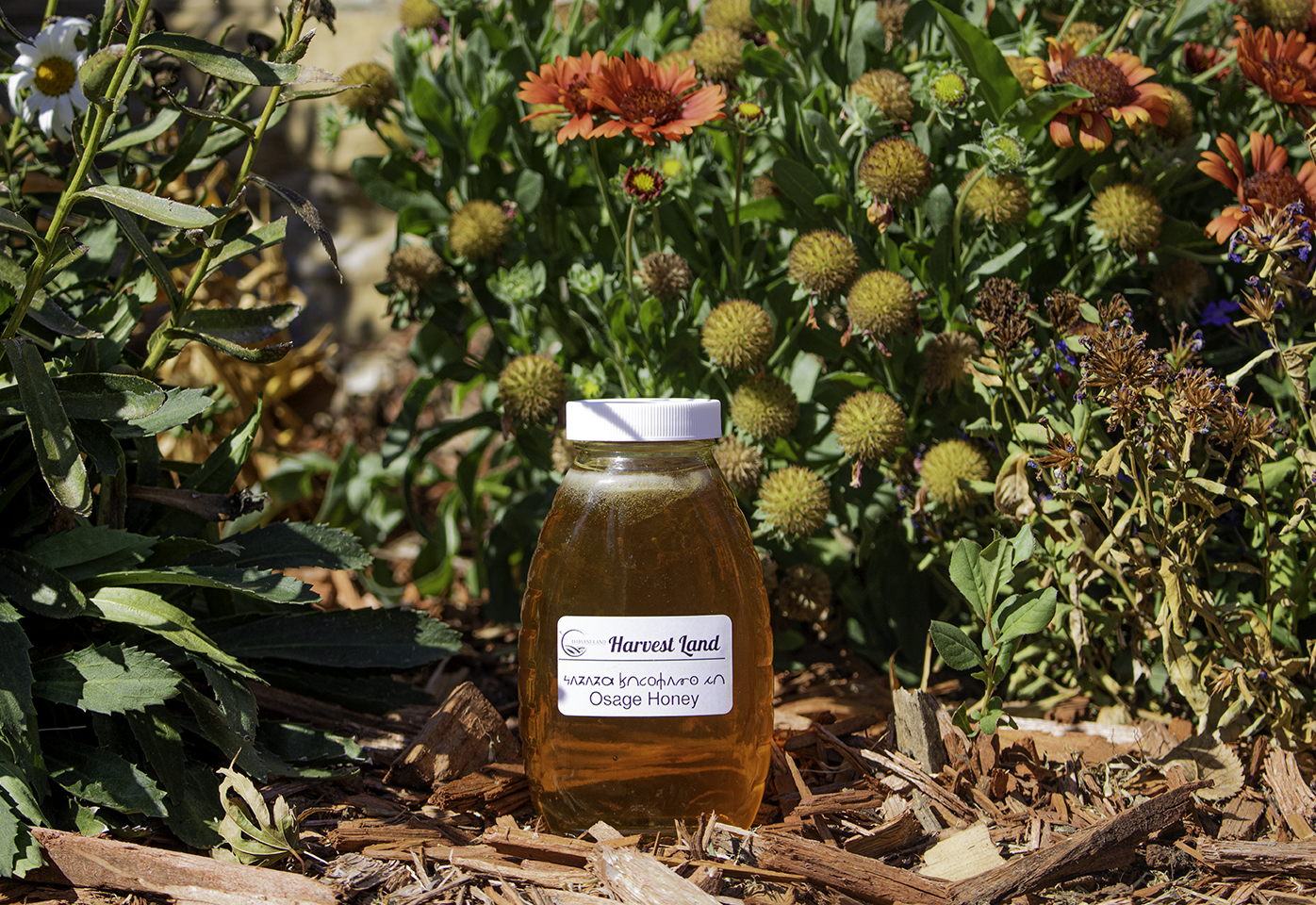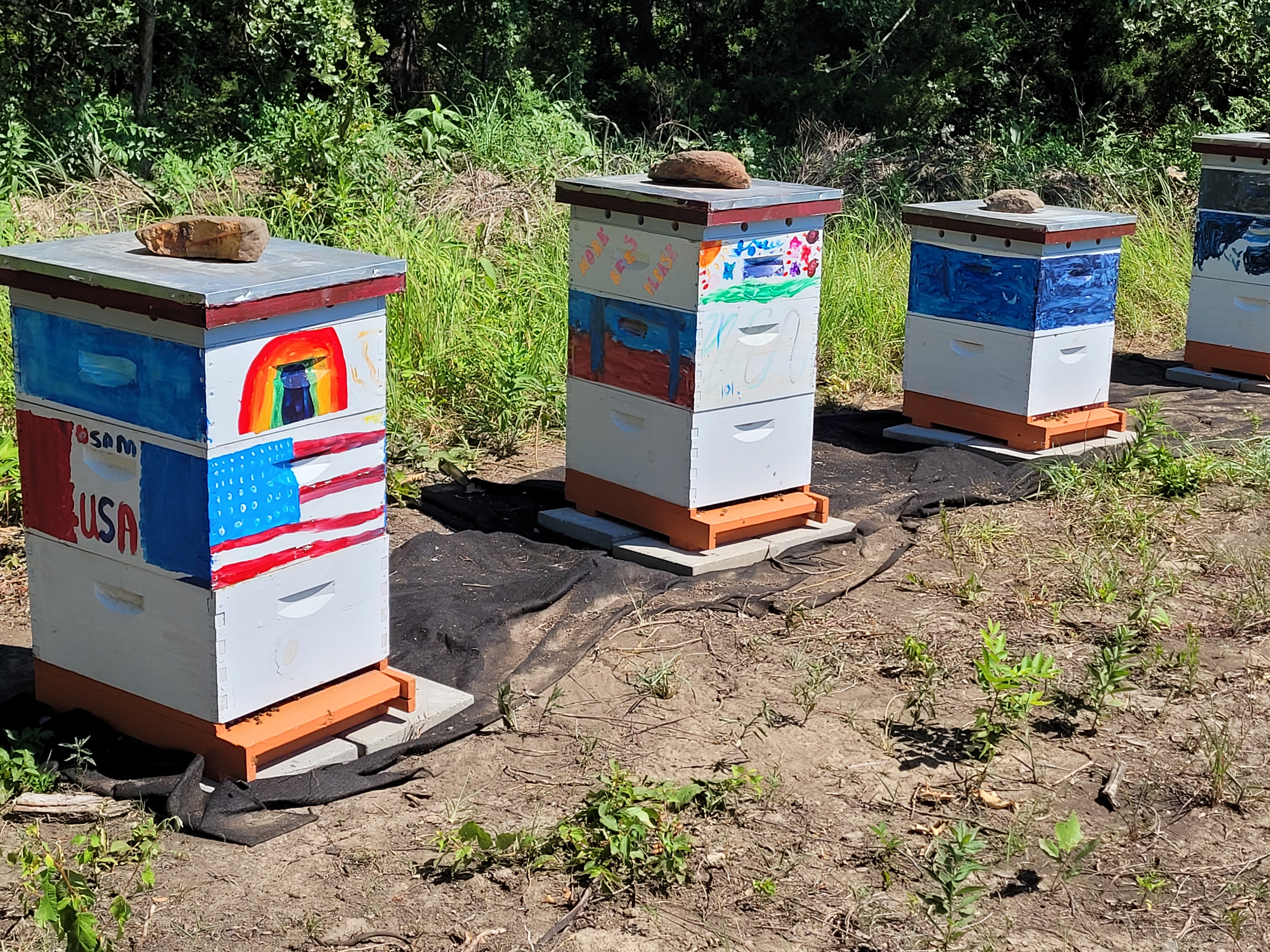Last May, the Department of Natural Resources staff members Cameron Chesbro and Tom Ashmore took a trip to Roark Acres Honey Farms just outside of Tulsa to collect five honey bee nucs to begin the Osage Nation’s Apiary journey. The next day, the colonies arrived at their new homes in Pawhuska.
WHAT’S A NUC? A nuc consists of a box with frames, at least two broods, one food, a queen bee, and a large number of worker bees.
While the colonies have been growing and building up their new hives, The Harvest Land team has been focused on feeding the new hives to support their survival through winter and be able to emerge strong when spring arrives. Because hive health is directly related to the hive queen health, the hive queens were quickly identified. It was determined that one hive queen was not in good health based upon the slow growth of the hive, which resulted in a necessary requeening. Since requeening, the fifth hive is healthy and growing considerably.
Quite a BUZZ...
During the first year of a new hive, it is extremely improbable to harvest any honey from a hive. New colonies keep everything they make to insure enough food stores for winter survival. Bees do not hibernate during the winter, but instead they stay active within the hive and go on cleansing flights on warm days. Despite not harvesting honey this year, there was one particular hive that grew and expanded extremely quickly. A super was added to this hive to prevent swarming and provided the colony more space. A super is a hive box that is for storing and making honey only. When this super was removed from the hive, there were six full frames of honey. This honey was made when the syrup was being fed to the bees and could not be sold as pure honey. However, these six frames provided a great opportunity to gain some practice in extracting honey. These six frames of honey yielded almost 1.5 gallons of honey. This stirred excitement around the Department of Natural Resources office imagining what 5-10 full supers (60-80 lbs of honey for each super) would yield next year!
The Osage Nation Apiary will be expanding next year by increasing the number of hives by splitting the current hives and catching swarms. All the colonies owned by the Nation are housed in very unique hive boxes. Before the first five nucs were ever picked up, Daposka Ahnkodapi students came to Harvest Land to paint the hives. The children were allowed to pick an Osage word related to the natural environment and given free range to paint their own interpretation. The plan is to use each painted box in the apiary. When the box needs a refresh it will be painted white and cycled back into the inventory for a new child to paint.
WHAT’S AN APIARY? An apiary is a place where bees are kept or a collection of beehives
Our bees and beekeepers are preparing for winter and spring. Sugar candy has been made, honey stores are good, and hive health is continually being assessed. If all goes well, all five hives will come out of winter strong and ready to start producing honey. Our goal is to sell Osage Nation honey at Harvest Land Farmers’ Markets within a year.


